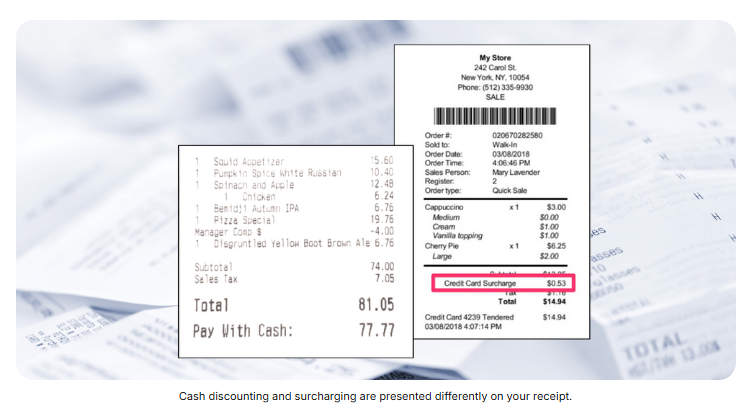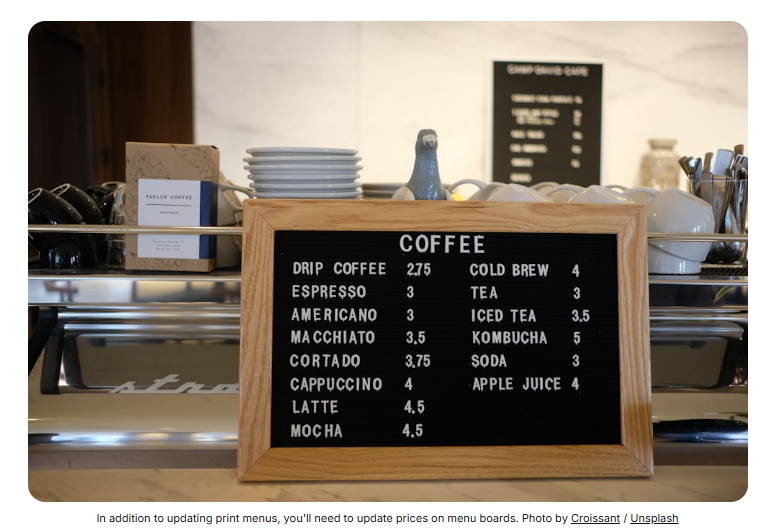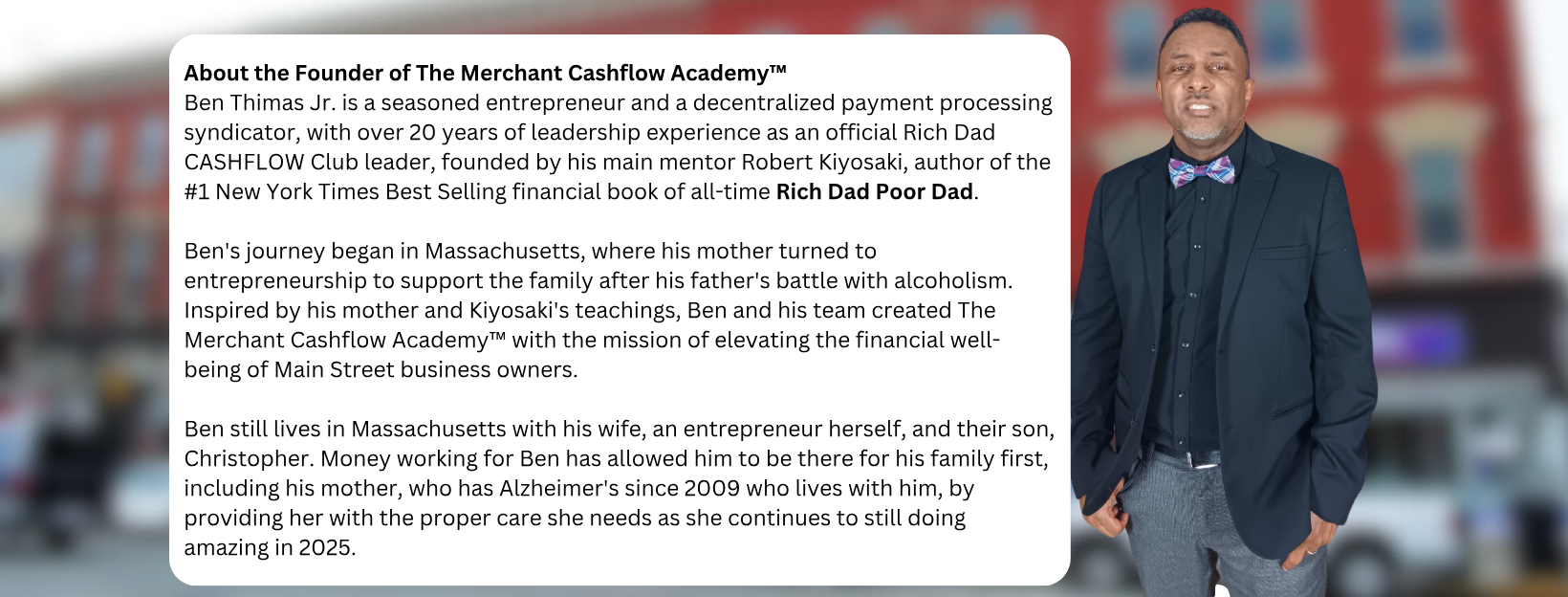The Hidden Cost of Card Payments: What Businesses Need to Know About Dual Pricing
Are you processing credit cards the wrong way?
Most business owners don’t realize that credit card fees aren’t just eating away at their profits—they’re also costing their customers and their communities more. Every time you pay those fees, you’re funneling money away from your business and into the hands of banks and processors.
Plus, with the Trump administration actively dismantling the Consumer Financial Protection Bureau (CFPB), which was originally designed to safeguard small business owners and consumers from predatory banking practices, financial institutions now have even greater freedom to impose excessive processing fees. The CFPB, created after the 2008 financial crisis, was responsible for regulating banks, credit cards, and payday lenders. However, recent moves to weaken its authority, including staff reductions and the rollback of key consumer protections, have significantly reduced oversight, allowing banks to increase fees with less accountability .
That’s money lost that could have been reinvested into better wages, lower prices for customers, or even supporting local jobs and community growth.
Dual pricing, also known as cash discount, puts control back in your hands. It’s a simple, legal way to eliminate processing fees while giving customers the choice to save money by paying with cash, which turns the merchants payment processing from a liability into a cash flowing asset on their income statement and and balance sheet as depicted on the right.
The big players have been using this strategy for years—now, it’s time for small business owners to stop playing by the banks rules and start keeping more of what they earn.
If you're tired of losing money while big banks profit, it’s time to rethink how you handle payments. Learn how to set up dual pricing the right way and start making your money work for you, your customers, and your community.


On the left, the income statement and balance sheet illustrate credit card processing as an asset, where money saved and cash flow gained directly benefit the merchant’s bottom line. This means lower expenses, increased profitability, and more capital to reinvest in the business.
On the right, the traditional income statement and balance sheet show credit card processing as a liability, where money is lost to banks and processors. Instead of retaining profits, the business sees cash flow draining out, reducing overall financial strength and long-term growth potential.
Most business owners work for money, but the rich make money work for them. The question is—who is your money working for? If you're paying credit card processing fees every month, then your money isn’t working for you—it’s working for the banks. If you’ve ever driven past a gas station and noticed two different prices—one for cash, one for credit—you’ve already seen how the wealthy play the game.
This strategy, called dual pricing (or cash discounting), gives customers the choice: pay with cash and save, or pay with a card and cover the processing costs. The result? The business owner stops bleeding profits to the banks and keeps more money in their business.
Here’s the best part—it’s 100% legal in all 50 states, and it’s not just for gas stations. Smart entrepreneurs are using this strategy to cut costs, increase cash flow, and reinvest in their businesses. The question is, will you keep playing by the banks’ rules, or will you start using the same strategies they do?
Just because you can do something doesn’t mean you should. The difference between a smart entrepreneur and a struggling business owner is knowing how to play the game the right way where it doesn't cost the customer in the end, unlike raising prices and surcharging. Dual pricing, when done correctly, is a powerful tool to eliminate processing fees and boost profits. But done poorly? It can drive away customers, trigger penalties from major credit card brands, and even put your business at risk.
The key is understanding the difference between a properly structured cash discount program and a surcharge—and knowing how to implement it legally and effectively. This consumer education e-guide will break it all down for you. You’ll learn how cash discounting works, how to determine if it’s right for your business, and—most importantly—how to set it up the right way to maximize your profits without alienating customers or violating payment regulations.
Play smart, and your money will finally start working for you—not the banks.
The Smart Business Owners Guide to Dual Pricing and Generating Recurring Revenue
Every business owner is familiar with the pain of credit card processing fees eating into their profits. What if you could eliminate those fees and create new income streams for your business?
Enter dual pricing.
How Dual Pricing Works:
Set a single posted price for your products or services that includes credit card processing fees.
Offer a discount (typically 3-5%) to cash-paying customers to incentivize cash payments.
Card-paying customers pay the full price, covering the transaction fees.
Your business eliminates credit card processing fees while giving customers a choice.
Steps to Implement Dual Pricing:
Restaurants: Update menus, menu boards, and your POS system to reflect dual pricing.
Retailers & Service Businesses: Adjust price tags, brochures, and signs along with your checkout systems.
All Businesses: Ensure you work with a compliant payment processor to set up the program correctly.
But dual pricing isn't just about saving on fees—it’s also about creating additional revenue streams for your business.
Create Recurring Revenue with Dual Pricing:
Refer other merchants to the program and earn recurring commissions for every new business you bring on board.
Expand the program to multiple locations, earning revenue each time you implement dual pricing in a new store.
It’s a win-win—save on processing fees while generating new income for your business.
Note: If dual pricing is not set up properly, you could face compliance violations and penalties from credit card brands. It’s essential to partner with a payment processor who knows the ins and outs of compliance.
Start using dual pricing today to cut costs, build new revenue, and take control of your profits.

Cash Discounting: Rules, Requirements, and How to Get It Right
What You Need to Know About Cash Discounting
If you're looking to offset credit card processing fees and keep more of what you earn, cash discounting is the smart way to go. But just because you can implement this pricing model doesn’t mean you should jump in blindly. To make it work, you need to understand the rules and how to follow them—without leaving money on the table or risking penalties.
Here's How to Make Sure You're Compliant:
Advertise the Credit Card Price
To stay compliant with the big credit card networks like Visa and Mastercard, you must advertise the price for credit card payments. You can either:
List the credit card price as the posted price.
Or, list both the cash and credit prices—just like a gas station.
Clear Signage Is a Must
Visibility is key. Make sure your customers know that you're offering a discount for cash payments. This means placing clear signage that shows the discount percentage and that it applies only when paying with cash.
Where to display:
Entrance to your business
Menus
Point of sale (POS) area
Receipts should list the cash discount clearly
POS Configuration
Your POS system should show a clear line-item indicating the cash discount, specifying both the discount percentage and that it's only valid for cash payments. For instance, a 3% discount on a $100 meal should show as a $3 cash discount.
How Cash Discounting Differs from Surcharging
While cash discounting is a way to reward your customers for using cash, surcharging is a totally different beast—and you need to know the difference.
What Is a Surcharge?
A surcharge is a fee added on top of the regular price for customers who pay with credit cards. It’s essentially a fee you pass onto the customer to cover your credit card processing costs.
The big difference? Surcharging is not legal in all 50 states, and the rules vary depending on where you are:
States like Connecticut, Maine, and Massachusetts don’t allow surcharging at all.
Oklahoma and Colorado limit the surcharge rate to 2%.
New York requires you to post both cash and credit prices.
Credit Card Rules for Surcharging
Visa, for example, reduced their maximum surcharge rate from 4% to 3% starting April 2023. This means you can’t just add whatever surcharge fee you want—you need to adhere to network rules and register your surcharge program through your payment processor.
Cash Discounting vs. Surcharging: Customer Perception
Cash Discounting is communicated as a discount from the regular price. It’s clear, fair, and creates a positive customer experience.
Surcharging, on the other hand, is viewed as an added fee. This can leave a bad taste in customers’ mouths and may even cause them to seek out a competitor with more transparent pricing.
Bottom Line: Dual pricing (or cash discounting) works best when done right. It’s a tool for your business to eliminate fees, but it’s crucial to stay compliant with all the rules. Implemented the right way, it can not only help you save but also boost your customer satisfaction—and even open up a revenue stream by referring other businesses to set up their own dual pricing systems.

Here's the truth: Many merchants are hesitant to implement a credit card convenience fee, fearing customers will walk away. But the truth is, customers don't mind these fees as much as you might think. Research shows that consumers often value earning credit card points, and more importantly, they want to support local businesses over corporate businesses that drain wealth out of a community.
Now, let's dive into dual pricing—an effective strategy to reduce credit card processing fees and boost your bottom line. Unlike surcharges which are illegal in some states often confused with dual pricing or cash discount that add extra fees to card payments, dual pricing rewards customers who pay in cash with a discount. This approach is legally compliant in all 50 states when done correctly. It’s a simple yet powerful method to offset card fees and is often more accepted by customers, who prefer receiving a discount rather than being charged a surcharge (Surcharging vs Cash Discount).
However, setting up a dual pricing program requires careful attention. You'll need to configure your payment terminal to charge the regular price by default, while the discounted price appears only for cash transactions. Proper setup is key to avoiding compliance issues the a reputable service provider can easily do for you and that can easily be switched back if you no longer want to do dual pricing at some point.
Here are the benefits of adopting a dual pricing program:
Eliminate or reduce credit card fees: By offering discounts to cash payers, you can reduce your card processing costs.
Improve cash flow: Cash transactions are not only fee-free but also reduce the risk of fraud and chargebacks.
Customer reception: People are more receptive to discounts than fees or surcharges, which improves overall satisfaction.
Legal compliance: Cash discounting is fully legal in all states when implemented correctly.
While cash discounting can be a great strategy, it's not for every business. To help you decide, here’s a comparison between cash discounting and the surcharge model to make sure you choose the best option for your business.
Understanding these strategies—and knowing how to implement them effectively—can help you take control of your finances and thrive rather than just survive. Start saving today!

Comparison of Pricing Models: Dual Pricing vs Standard Processing vs Surcharging
| Benefit | Dual Pricing (Cash Discount) | Standard Processing | Surcharging |
|---|---|---|---|
| Credit Card Fees | Eliminates or reduces card processing fees by offering a discount for cash payments. | Business pays processing fees on every transaction, regardless of payment method. | Adds a fee on top of the transaction price for credit card payments, passing on processing costs to the customer. |
| Legal in All States | Yes, when set up properly. Fully compliant in all 50 states. (U.S.) | Yes, but depends on business’s specific arrangements with credit card processors. | No, not legal in all states (e.g., Connecticut, Maine, Massachusetts). Rules vary by state. |
| Customer Acceptance | More accepted as customers prefer receiving a discount rather than being charged a fee. | Standard pricing; no direct impact on customer behavior but may discourage higher-value transactions due to high fees. | Can be negatively received as it feels like an added fee for using a credit card. May deter some customers. |
| Impact on Cash Flow | Improves cash flow by incentivizing cash payments, which also reduces the risk of chargebacks and fraud. | Standard; processing fees remain high, impacting overall cash flow. | Can reduce card fees but doesn’t provide the same positive impact on cash flow as dual pricing or cash payments. |
| Customer Perception | Seen as a fair discount for cash-paying customers, offering a win-win scenario. | Standard pricing with no incentive to pay with cash, leading to customer dissatisfaction over hidden fees. | Customers may feel penalized or unfairly charged for using a credit card, leading to potential dissatisfaction. |
| Implementation Complexity | Requires a sophisticated payment system setup but is fairly easy to implement once configured. | Simple, but comes with higher costs for the business. | More complex than dual pricing; businesses must follow specific legal requirements for surcharging and register with card networks. |
| Impact on Pricing | No need to inflate prices; cash-paying customers benefit directly from lower costs. | Businesses may need to raise prices across all items to compensate for processing fees and inflation. | Prices remain the same, but credit card users pay an additional fee at checkout. |
Deciding if a dual pricing is right for your business isn't about just slapping a fee or discount on your prices. It’s about understanding your customers’ preferences, the real costs of doing business, and how it aligns with your long-term strategy. So, before you jump into a dual pricing program or surcharge, ask yourself these key questions:
1. How do your customers prefer to pay?
This is the most critical factor. Think about your typical customer. Do they pay with cash, or do they pull out their credit cards? The beauty of a cash discount is that it helps businesses who have a solid cash-paying customer base. When you offer a discount for cash, you can raise your listed prices. Your credit card customers will pay the new price, but your loyal cash customers will still pay the same price they’re used to. This means you offset those pesky credit card fees without alienating your base.
But here’s the flip side: If your customers mainly pay with credit cards, a cash discount might look like a penalty to them. It could even drive away business, particularly in areas where card payments are the norm—like urban centers or upscale businesses. Think about this: your pricing already includes overheads like rent, wages, and supplies. So why not build in the costs of card processing into your pricing? Why penalize your customers for paying with what’s become the modern currency?
2. Will you miss out on increased sales?
Here’s a key fact: Consumers spend more when they use a card. It’s a simple psychological principle: swipe a card, and you tend to spend more. Studies show that 76% of people prefer to use a card over cash, and they're twice as likely to spend more when using a card than when paying with cash (Forbes Advisor). With mobile pay options like Apple Pay and Google Pay becoming mainstream, you’re dealing with even more credit card transactions—and these often come with a higher spend.
If you’re operating in a market where credit card payments are the norm, a cash discount might actually hurt your ability to maximize sales. You could be cutting yourself off from an entire group of customers who use cards to rack up points or get cash-back rewards.
So here’s the bottom line: A cash discount can be a powerful tool for offsetting card processing fees, but it’s not right for every business. You need to ask yourself whether it fits your customer base and whether you’re willing to trade potential sales for the small savings it might provide. The most successful entrepreneurs are the ones who understand the psychology behind their customers' behavior and adapt their pricing strategies accordingly.
Understanding the rules of money is essential, and cash discounting can be one of your most powerful tools. But only if you understand when and how to use it.
For more information on the impact of payment methods, check out Forbes Advisor's article on spending habits with credit cards here.

3. Is there an easier way to reduce credit card processing fees?
Here’s the reality: Many business owners get excited about cash discounting thinking it’s the ultimate fix for high credit card processing fees. But beware of the fine print. When you sign up for a cash discounting plan, your processing costs are typically higher. Sure, you’re raising your prices to account for the discount, but that doesn’t mean the overall savings outweigh the costs. If you’re going to raise your prices anyway, why not take control of your rates directly?
Don’t let your payment processor dictate your costs. Instead, negotiate the best credit card processing rates you can. The key to building wealth is knowing how to keep costs low and profits high. If you’re not an expert in negotiating rates, partner with someone who is. Take the time to educate yourself and find the right balance—and always keep in mind that you are the one in charge of your profits.
4. Is it worth paying extra to have a payment professional set it up for you?
Now, here’s where it gets interesting. One of the best parts about cash discounting or dual pricing is having a reliable merchant services provider to handle the heavy lifting. You’re in business to grow, not to get bogged down in the technical details. Setting up a cash discounting program can be complicated—there are compliance rules to follow, prices to adjust, and systems to program.
That’s why you might want to consider paying a little extra for a trusted technology partner. Sure, you could raise prices on your own, but it’s not just about raising prices—it’s about doing it legally, efficiently, and in a way that’s clear to your customers. A partner with experience can save you time, headaches, and give you peace of mind knowing your program is fully compliant.
At companies like SpotOn, their team doesn’t just set up your program—they help you understand your current credit card rates, analyze your business, and guide you toward the best pricing model. They’ll handle the setup, provide the signage, and ensure your payment terminal is properly configured. This isn’t about cutting corners—it’s about making sure your program is set up correctly and in a way that makes sense for your business.
How to implement a legally compliant cash discount program
1. Choose your cash discount percentage
First, decide how much of a discount you want to offer. A 1% to 4% discount is typical. Know your numbers—the higher your average ticket, the lower the percentage of discount you’ll need. Adjust accordingly, so your customers still feel like they’re getting value.
2. Increase your pricing
When implementing a cash discount program, you need to raise your prices to accommodate the discount. The key here is how you raise your prices. SpotOn typically recommends raising your prices by the same amount as the discount, so your card-paying customers will effectively cover the credit card processing fees. Be sure to assess how your customers will react to the price increase, though, and make sure it’s not a shock.
3. Program your POS with the cash discount and updated pricing
This is where you need to be careful. Your POS system should be programmed to display the listed price as the credit card price and the discounted price for cash payments. If you’re offering a discount, the system should display that as a line item discount—not a fee.
4. Update menus, pricing boards, and brochures

Here’s the thing: if you raise your prices to cover the cost of credit card processing fees, it’s essential to be transparent with your customers. You must clearly display the prices they’ll pay when using a card. The last thing you want is to surprise customers at checkout. To keep things smooth and professional, update your pricing everywhere:
Menus (print and digital): If you’re a restaurant or service provider, this is critical.
Pricing boards: If you’ve got one of these in your store, update it to reflect the true costs.
Website: Your online store or website should display these prices to match the in-store prices.
Brochures: If you hand out brochures or other promotional materials, don’t forget to update those too.
It’s crucial that you not only raise prices but also clearly advertise the cash discount you offer. Add a note to your materials specifying the percentage of the discount available when paying with cash.
5. Post Clear Signage
Don’t let your customers wander around confused—put up clear signage so everyone knows about the discount. The goal is for your customers to know upfront what they’re getting, no surprises.
A simple, straightforward sign will do the job—no need for fancy language or graphics. Something like:
"As a convenience, we offer a 3% discount when you pay with cash."
Place this notice prominently at both the entrance and checkout stand so customers see it as soon as they enter and again when they’re ready to pay.
6. Train Your Staff
Your staff can be your best asset or your worst liability when it comes to implementing a cash discount program. Training your team is absolutely critical. They need to know exactly how to process the discount at checkout and be prepared to explain it to customers confidently.
The message your staff communicates should be clear and positive. Frame it as a convenience or discount, not as a surcharge or penalty. People are more likely to appreciate the program if they feel like they’re getting something extra, not being penalized for using a credit card.
The bottom line: Your cash discount program will only succeed if your team communicates it properly. Make sure they understand how the program works and feel comfortable explaining it. This is about building trust and making the customer experience as smooth as possible.
DISCLAIMER: Everything here is just for informational purposes. The links and graphics may not be accurate and we encourage you to do your own research. Also, we can't guarantee results from following our advice. Always consult a professional for your specific situation.
Let's explore how we can assist you.
Take control of your business's financial future with a no-obligation quote from my trusted referral partner.
No high-pressure sales tactics—just a straightforward, low-key conversation to see if our dual pricing program, with the added bonus of recurring referral revenue, is a good fit for your business. We'll ensure you get the best market quote for both the program and any necessary equipment.
Let's discuss how we can set you up for success.

SMALL HOLES SINK GREAT SHIPS
-Benjamin Franklin

